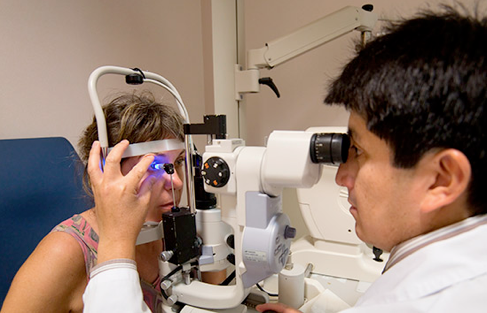
Glaucoma, the silent disease
By the time symptoms appear it is already late, and the disease is usually in its advanced stages. That is why around 500,000 people in Spain suffer from the disease without realising, and why it is known as the “silent disease”, or the “silent thief of sight”. In Spain, glaucoma affects one million people.
What is glaucoma?
Glaucoma is an eye disease that is mainly characterised by a loss of vision due to progressive damage to the optic nerve. Glaucoma is the second biggest cause of blindness in Spain, after cataracts.
The main risk factor is ocular hypertension. If the pressure inside the eyeball increases, the optic nerve is compressed and its neurons are damaged. This results in the cells in the neurons dying, reducing the patient’s field of vision.
Glaucoma is unusual in that, in its initial phase, glaucoma is frequently asymptomatic and sufferers do not notice a loss of vision. The sooner it is diagnosed, the sooner its progress can be halted, although the loss of sight cannot be reversed.
Delfina Balonga, president of
the Spanish Glaucoma Association for Patients and Family members (AGAF)
Damage prevention
Regular ophthalmological check-ups, in which an expert checks the condition of the optic nerve fibres and whether or not there is a degeneration, are extremely important
Damage to the ocular nerve is irreversible and causes a progressive loss of lateral vision, “like looking down a tunnel”. This gradual loss of vision, and the absence of pain in most cases, is why the patient does not realise anything is wrong.
The main problem with glaucoma is that, if it is not detected in time, it can cause serious vision problems and, in 5% of cases, total blindness. Once diagnosed however, “it can be stopped in most cases”.
Although it can appear at any time of life, it is more common above the age of 60. There are several risk factors, such as diabetes, high intraocular pressure, family history, high myopia (over five dioptres), high blood pressure, or corticosteroid medication.
Ms. Balonga recommends a check-up once every two years from 40 years old, and annual check-ups over 45-50 years old.
Diagnostic test
Glaucoma is diagnosed by measuring ocular tension, as well as an examination of the optic nerve and, when there is a doubt, through an evaluation of the field of vision.
Early detection allows for variety of treatment options, ranging from eye drops to surgical intervention.
It is essential to follow the treatment plan to stop the disease from progressing, insists Ms. Balonga, who explains that a patient will have to adapt to certain limitations caused by the disease in daily life. “It’s not easy”, she admits.
Symptoms
When the disease is in its advanced stages, the most frequent symptoms include the difficulty of seeing laterally and through certain sections of the eye, problems focussing and headaches, among others.
Blindness is the final stage of glaucoma and usually occurs when the disease has been untreated for many years, when it is extremely aggressive or has not been properly treated, explains the president of AGAF.

